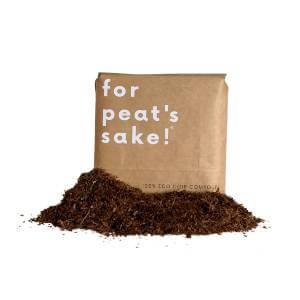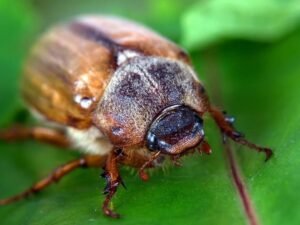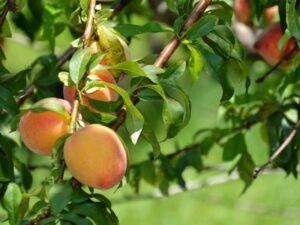Grey mould, scientifically known as Botrytis cinerea, is a devastating fungal pathogen that affects a wide range of plants and crops. This article aims to shed light on the characteristics, lifecycle, impact, and effective control measures against grey mould.
Characteristics of Botrytis cinerea
Botrytis cinerea is characterised as a necrotrophic fungal pathogen, which means it derives its nutrients from dead or dying host tissue. It typically has a greyish appearance, which gives the disease its common name, “grey mould.” The fungus produces abundant, fluffy mycelium covering the surfaces of infected plant parts.
Lifecycle and Infection
The lifecycle of Botrytis cinerea involves colonization, reproduction, and dissemination. The fungus overwinters in plant debris, soil, and infected plant material. In spring or when conditions are favorable, spores called conidia are formed and released into the air or water. These conidia can either land directly on plant surfaces or enter wounds, initiating infection. Once inside the plant, the fungus starts colonizing and spreading, causing tissue decay.
Hosts and Impact
Botrytis cinerea has an extremely wide host range, affecting more than 1,000 plant species, including fruits, vegetables, flowers, and ornamental plants. Its ability to infect various plant parts, such as leaves, stems, flowers, and fruits, makes it a significant threat to agriculture and horticulture industries. Infected plant tissues show characteristic greyish-colored lesions, wilting, and decay.
Factors Favoring Botrytis cinerea Development
Several environmental factors contribute to the development of grey mould. High humidity, prolonged leaf wetness, cool temperatures (15-25°C or 59-77°F), and crowded plant canopies create favorable conditions for infection. In addition, wounds, injuries, or damaged tissues provide entry points for the pathogen, accelerating its spread.
Control and Management
Controlling grey mould requires an integrated approach combining cultural, chemical, and biological measures. Here are some strategies to consider:
Sanitation: Remove and destroy infected plant residues and debris to minimize sources of inoculum.
Proper spacing: Maintain adequate spacing between plants, allowing for proper air circulation, thus reducing humidity levels and preventing crowding.
Avoid overhead irrigation: Use drip or other targeted irrigation systems to minimize leaf wetness and reduce fungal spore germination.
Pruning: Regularly prune plants to improve air movement and sunlight penetration, reducing humidity and promoting faster drying of plant surfaces.
Fungicides: If necessary, apply fungicides with a proven efficacy against Botrytis cinerea. Ensure proper timing and follow label instructions.
Biological control: Consider using microbial-based biological control agents, such as Bacillus subtilis, Trichoderma spp., or beneficial fungi like Ulocladium oudemansii or Ampelomyces quisqualis.
Conclusion
Grey mould caused by Botrytis cinerea poses a significant threat to various crops and ornamental plants. Understanding the lifecycle, infection, and factors favoring its development is essential for effective control and management. By implementing integrated pest management strategies, such as sanitation, proper spacing, and targeted fungicide applications, growers can reduce the impact of grey mould and safeguard their plants.
Grey Mould FAQs
Here are some frequently asked questions about grey mould (Botrytis cinerea):
Q. What is grey mould?
A. Grey mould, scientifically known as Botrytis cinerea, is a common fungal disease that affects a wide range of crops, fruits, vegetables, and ornamental plants. It is characterized by the development of greyish-colored lesions, wilting, and tissue decay.
Q. How does grey mould spread?
A. Grey mould spreads through spores called conidia, which are produced by the fungus. These spores can be carried through the air or water and can land directly on plant surfaces or enter through wounds or injuries. Once inside the plant, the fungus starts colonising and spreading, causing further infections.
Q. What are the symptoms of grey mould?
A. Symptoms of grey mould include greyish-colored lesions on leaves, stems, flowers, or fruits. The affected tissue may become mushy, wilt, and eventually decay. In some cases, a fuzzy grey moldy growth may be visible on the surface of infected plant parts.
Q. What are the ideal conditions for grey mould development?
A. Grey mould thrives in cool temperatures (around 15-25°C or 59-77°F) along with high humidity or prolonged leaf wetness. Overcrowding of plants and poor air circulation can create the perfect environment for the disease to spread rapidly.
Q. How can I prevent or control grey mould?
A. To prevent or control grey mould, consider the following measures:
- Remove and destroy infected plant material and debris to reduce sources of inoculum.
- Provide adequate spacing between plants to promote air circulation and reduce humidity levels.
- Avoid overhead irrigation, as it can keep plant surfaces wet for extended periods, providing a conducive environment for the fungus.
- Regular pruning can help improve air movement and sunlight penetration, reducing humidity and speeding up surface drying.
- Consider using fungicides with proven efficacy against Botrytis cinerea. Ensure proper timing and follow label instructions.
- Biological control agents, such as certain beneficial fungi and bacteria, can also be used as a part of an integrated pest management approach.
Q.Can grey mould be harmful to humans?
A. Grey mould is primarily a plant pathogen and does not pose a significant health risk to humans. However, individuals with weakened immune systems or respiratory issues may experience allergic reactions when exposed to high levels of fungal spores.





































